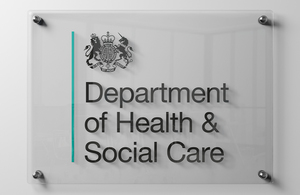New figures shine a light on A&E quality
New figures showing the quality of A&E services have been published for the first time today.

New figures showing the quality of A&E services have been published for the first time today.
The publication was ordered by Health Secretary Andrew Lansley to give patients and the NHS a more rounded view of the quality of A&E services. The eight clinical quality indicators measure more than the single standard introduced under the previous government which showed the percentage of patients being seen within four hours.
Although the number of patients being seen within four hours remains a key measure of A&E performance, the new figures being published today also include:
• The proportion of patients who left A&E without being seen
• The proportion of patients who had to attend A&E again within the week after their first attendance
• The time it takes to initial assessment.
All the measures were developed jointly by Professor Matthew Cooke, the National Clinical Director for Emergency Care, together with senior clinicians in the College of Emergency Medicine and the Royal College of Nursing.
The figures show that there is variation in the quality of care across the country and highlights areas where there may be a need for improvement. Without the publication of this important information, these issues would have continued to go unnoticed and unchallenged.
The publication of the A&E figures follows recent figures illustrating the success of the Government’s transparency drive on mixed-sex accommodation. Since December, when data were first collected, breaches have fallen by 90 per cent in the space of eight months.
Health Secretary Andrew Lansley said:
“We know the time that people wait in A&E is important to patients, which is why it remains at the core of our new measures of A&E performance.
“But, waiting is not the only thing that matters to patients, which is why it should not be the only thing that matters to the NHS. We should be measuring the whole quality of care patients receive at A&E, which is what this Government has done.
“The figures published today will help the NHS drive up the standards of care, improve patients’ experience and shine a light on where A&Es can improve.
“Patients should be able to expect a 24/7 accessible and safe emergency care service which is integrated across the NHS. I expect all trusts to use this information in a positive way and improve services for patients.”
Professor Matthew Cooke, National Clinical Director for Emergency and Urgent Care said:
“The new clinical quality indicators for A&E services offer an opportunity to ensure that we always strive to improve services for patients.
“We now have measures that look at the percentage of patients who re-attend A&E departments within seven days of their first visit or how quickly potentially life-threatening conditions are first assessed so that the emergency care system can be viewed as a whole to give patients the best possible care.”
ENDS
NOTES TO EDITORS
1. The full data for the A&E clinical quality indicators can be found on the NHS Information Centre website.
2. Health Secretary Andrew Lansley is visiting the A&E department at Birmingham Heartlands Hospital on Friday 26 August.
3. For more information, please contact the Department of Health press office on 020 7210 5221.
LIST OF A&E INDICATORS
1. Percentage of patients with certain ambulatory care conditions admitted
2. Unplanned re-attendance rate
3. Total time spent in the A&E department
4. Left department before being seen for treatment rate
5. Service experience
6. Time to initial assessment
7. Time to treatment
8. Consultant sign-off